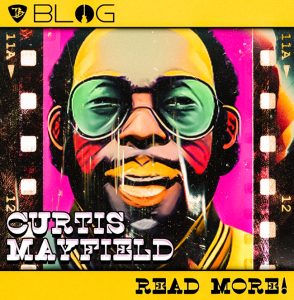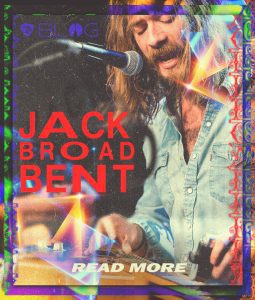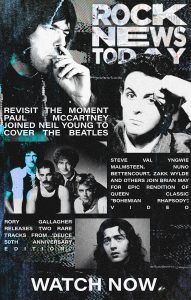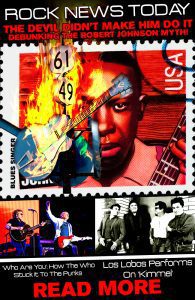The Beatles Rubber Soul to Revolver’ Book Coming
A new book examining the middle years of The Beatles’ recorded output is being published this fall. The Beatles Rubber Soul to Revolver, the latest installment in Bruce Spizer’s Beatles Album Series, arrives Oct. 10, 2022. As the announcement notes, the title covers two of the group’s much-loved albums, December 1965’s Rubber Soul and August 1966’s Revolver albums, as well as Capitol Records’ June 1966 U.S. release, Yesterday And Today, as well as the singles associated with these albums.
[The timing of the book follows speculation that the Beatles’ Apple Corps Ltd. is planning a fall 2022 expanded release of one (or both) of the albums. Beginning in 2017, and continuing annually through 2021, the label has delivered Super Deluxe Editions for the 50th anniversaries of Sgt. Pepper, The Beatles aka The White Album, Abbey Road and Let It Be.]
More from the book’s announcement: Rubber Soul and Revolver set new standards for pop and rock records and presented a maturing and evolving Beatles to the world. The 16 tracks recorded during the Rubber Soul sessions, including “Norwegian Wood (This Bird Has Flown),” “Nowhere Man” and “In My Life,” are among the group’s finest.
With Revolver, the Beatles were looking for more color in their recordings, trying new instruments and techniques. But they were not using studio wizardry to cover weaknesses; they were looking for new sounds to enhance their already brilliant songs. The album includes such classics as “Eleanor Rigby,” “Here, There and Everywhere,” and “For No One.” As producer George Martin noted, “For the first time, we began to think of albums as art on their own, as complete entities.”
The book contains chapters on the British, American, and Canadian perspectives, an extensive treatment on the infamous Yesterday And Today “butcher cover” and substitute trunk cover (featuring all of the significant images from the photo sessions and the true story behind the controversial cover). There are also chapters on the recording sessions and album covers, as well as on the news, music, and films of the era to place these albums in their proper context.
The New Orleans-based Spizer has written 13 critically acclaimed Beatles books, including The Beatles Are Coming and his series on the Beatles albums. He has given presentations at the Grammy Museum, the Rock and Roll Hall of Fame and Museum, and Beatles conventions in the U.S. and Liverpool. He serves a consultant on Beatles projects for Universal Music Group, Capitol Records, and Apple Corps, Ltd.
Derek Trucks on the magic of Pink Floyd: “David Gilmour created his own universe on guitar through his tone and approach”
The Tedeschi Trucks Band’s resident slide master on how David Gilmour stamped his musical identity all over Pink Floyd’s earliest recordings, and why no one can replicate it. Modern slide guitar maestro Derek Trucks discusses his enduring love and admiration for Gilmour’s playing and tells us just why “you can’t duplicate that shit!”
“It’s hard to find just one specific track to key in on with a player as talented as David Gilmour. When you go back to those early Pink Floyd records now, you can hear there has obviously been an evolution. But other things about Pink Floyd remained absolutely unchanged. There are certain things you can’t run from if that’s who you are!
“That whole idea of having your own musical identity is very beautiful. That’s why we do it, to express who we are. David Gilmour is one of those characters who has this holistic thing going on. I feel like he’s created his own universe on guitar through his tone and approach. And you can hear it in his earliest recordings with Floyd – on things like The Nile Song.
“When he plays, it takes you back and makes you feel like you’re in a certain place.”
So, whenever I hear him, it takes me back to spending time with one of my uncles when I was growing up. He was such a massive Pink Floyd fan, specifically David Gilmour’s guitar playing. Any time I hear that tone, those are the things I feel and think about. It’s always been there for me, with all these sounds that felt so magical.
“I can’t think of a single time I’ve seen him or heard David play and not enjoyed it. I’m always intrigued by what he’s doing. You know pretty immediately when it’s him plugged in, his sound is very singular. I can’t think of anyone else you could mistake him for… even though so many people have been influenced by him.
“There’s a whole wave of players that got into the soundscape-y thing because of Pink Floyd, but you can’t duplicate that shit! I don’t know if it’s in his hands or the way he hears things or the way he attacks his instrument or dials in his gear… whatever it is, for some reason, a few people have it and most others don’t!
“But I guess a big part of that sound comes from his bending. It’s how he gets into those notes, and sometimes it’s already halfway bent before he strikes the notes but always perfectly controlled. It’s a rare thing, being able to make your guitar speak like that. Not many people can do it that well!
“This reminds me of a Hubert Sumlin moment I had. I would listen to his playing on those old Howlin’ Wolf records from the 60s, trying to figure it all out and find those sounds, like, ‘How the hell was he doing that?’
“And then one time we were backstage at a festival, and he came into our room. There was this new Fender amp with a digital display on it and all these knobs, plus a brand-new guitar with a tag on it. He plugged in and it was that same f*ckin’ sound from the 60s! I was wondering how that’s even possible.
“But it was just his hands and how he attacks each note, which is just like Gilmour. He could play through anything, and you’ll know pretty quickly it’s him. I always thought it was the gear but, actually, it rarely is!”
Credits Amit Sharma: Total Guitar
Waiting for Columbus (Super Deluxe Edition)
Newly expanded with three complete concerts, this 1978 double live album captured the elastic, elusive charms of Little Feat and proved foundational for jam bands to come.
During their heyday in the mid-1970s, Little Feat had the reputation of being your favorite band’s favorite band. Other groups sold more records and tickets, but Little Feat cultivated a deep, passionate cult through their funky concoctions of New Orleans soul, California country-rock, and urban blues, a blend that was plenty appealing on record but found its natural home onstage.
Little Feat were aware of the chasm between their studio sets and concerts, so they aimed to channel that kinetic energy onto Waiting for Columbus, the 1978 double live album that’s now been expanded into an eight-CD box set with three complete concerts that provided the source for the original LP. Like many double-live sets of the era, this was the album that crystallized the band’s appeal, capturing the elastic, elusive charms of a group that wandered on the fringes of rock counterculture since the late ’60s.
Lowell George, a shaggy hippie with prodigious appetites, formed the band after leaving the Mothers of Invention. Legend has it that Frank Zappa kicked out George after hearing the guitarist’s original composition “Willin’,” a country-rock ballad for dopers. George called up Bill Payne, a keyboardist who didn’t pass an audition for Zappa, then roped in his old Factory bandmate drummer Richie Hayward, and invited ex-Mother bassist Roy Estrada into his new band, who alternated heavy, surrealistic blues with stoned country-rock. After delivering two superb albums in this vein, Little Feat regrouped, swapping Kenny Gradney for Roy Estrada while bringing in percussionist Sam Clayton and guitarist Paul Barrere, players that helped lead the band in a funkier direction in 1973’s Dixie Chicken and beyond.
Little Feat found their footing on 1974’s Feats Don’t Fail Me Now, a record made after the group relocated from Los Angeles to the Washington D.C. area. They started playing college towns up and down the east coast, developing into a ferocious rock’n’roll band with the dexterity of jazz musicians. They were kindred spirits with the Grateful Dead George wound up producing the Dead’s 1978 LP Shakedown Street—but their rhythms hit harder, and the band was tighter, qualities that helped Little Feat become a simmering cult sensation. They reached a boiling point on January 19, 1975, when they played a Warner Bros. package tour at London’s Rainbow Theatre, blowing headliners the Doobie Brothers off the stage with an unusually fiery set. Soon, the UK embraced Little Feat—and that includes British rock royalty: Jimmy Page sang their praises, while Clayton remembers, “One time, the Stones picked us up at the airport on the runway. We didn’t even have to go through customs.”
All the accolades didn’t translate into blockbuster sales in the United States. Little Feat managed to eke out respectable chart positions with Feats Don’t Fail Me Now and its successor, 1975’s The Last Record Album, whose title alone suggests how precarious their fate seemed. George started to drift away from the band during the recording of Time Loves a Hero, a 1977 record where Payne and Barrere nudged their music toward jazz, an inclination that came to a head on “Day at the Dog Races,” a winding instrumental that divided the band; upon hearing it, George groused “What is this, fuckin’ Weather Report?”
George rekindled his interest in Little Feat with the idea of a live album. The group decided to record shows at their hometown Lisner Auditorium in D.C. and return to the Rainbow, the site of their London triumph in 1975, adding a few warmup gigs in Newcastle and Manchester for good measure. Culling highlights from the Rainbow and Lisner gigs, Waiting for Columbus presented the platonic ideal of a Little Feat record: two LPs of prime loose-limbed funk, blues boogie, and jazz odysseys. Cut while they were plugging Time Loves a Hero, the track list prioritizes funky fusion over the stoner humor and hard-bitten blues of their first two records, yet those elements are still present in the open-ended reworking of “Sailin’ Shoes” and the heavy stomp of “A Apolitical Blues.”
When the group slides into “Old Folks Boogie,” it’s also possible to hear the origins of the middle-aged groove merchants Little Feat would become once they reunited nearly a decade after Lowell George’s 1979 death. When this shuffle is surrounded by funny, road-beaten rockers from Dixie Chicken and Feats Don’t Fail Me Now, it adds up to a complete portrait of everything Little Feat could do. As much as the Grateful Dead’s interstellar explorations, Waiting for Columbus is a urtext of jam bands, a joyous celebration of grooves and textures born of the group’s idiosyncratic chemistry.
Much of that chemistry is an illusion. Waiting for Columbus was heavily tweaked in the studio, with George supplying vocal and guitar overdubs over the course of three weeks. The ambling sets were sculpted into four smooth sides, skillfully balancing George’s tunes with those of Payne and Barrere. Engineer Warren Dewey set up mics in a hallway to capture the band’s pre-show huddle where they harmonized on “Join the Band,” a spiritual George and Payne discovered on a Smithsonian folk collection, so that snippet serves as a fanfare for the good times to come. These little editing tricks are put into sharp relief on the new Super Deluxe Edition, which includes a full Manchester warmup date, a night at the Rainbow, and one at Lisner.
Superficially, these concerts don’t offer much in the way of surprises. Little Feat didn’t expand when they jammed—they dug deep, burrowing into the recesses of a groove to give it life and color. When they extend “Dixie Chicken” to 14 minutes, it’s a way to ride a wave, not to head into the unknown. Throughout these shows, Little Feat play with varying levels of intensity: In Manchester, they are a bit loose, while they’re focused and driven at the Rainbow and invigorated by the hometown crowd in D.C. These may be subtle differences, but they are notable, as are the variations between these unvarnished live tapes and the finished album. Some of that amounts to the rough vagaries of live performance, whether it’s garbled lead vocals on a spectacularly funky “All That You Dream” from D.C. or George attempting to explain guacamole to a London audience during a fevered “Tripe Face Boogie.” On the whole, the performances are hotter than the finished LP, yet the shows also hint at the schism in the band by making space for fusion, both in the form of the jazzy “Red Streamliner” and long, long readings of “Day at the Dog Races” where Little Feat does sound like a streamlined Weather Report.
Heard on their own, each concert is thoroughly enjoyable, but an unexpected bonus is how they collectively accentuate the marvel of the original version of Waiting for Columbus. Far from diluting the experience of live Little Feat, the studio polish on the 1978 LP offers a heightened reality of the band, one where the bandmates are perfectly aligned, never leaning too hard on any one of their inspirations, never proceeding too far down one detour: They’re just rolling right through the night in a state of bliss.
Credits: Pitchfork – By Stephen Thomas Erlewine
Creedence Clearwater Revival To Issue Previously Unreleased 1970 Concert At Royal Albert Hall
Once thought lost forever, audio of the April 14th, 1970, Creedence Clearwater Revival concert at London’s famed Royal Albert Hall is headed for release on September 16th. Distributor Craft Recordings has also shared a cut of “Bad Moon Rising” set to appear on Creedence Clearwater Revival at the Royal Albert Hall.
The live album captures CCR in its prime, fresh off its third album on the Billboard 200 in a year, and hosts recordings of classics like “Green River”, “Travelin’ Band”, “Midnight Special”, “Good Golly Miss Molly”, “Fortunate Son” of course, and more. In addition to the 12-track recording, Craft will also release a feature documentary on the band narrated by Jeff Bridges.
Also out on September 16th, the Bob Smeaton (The Beatles Anthology, Hendrix: Band of Gypsies) documentary traces the group’s origins from El Cerrito, CA through the mid-to-late ’60s and up to the Albert Hall show. Though 1970 was a high time for Creedence Clearwater Revival, by the next year frontman/principal songwriter John Fogerty ‘s brother Tom would have left, followed by the group’s dissolution in 1972.
Creedence Clearwater Revival At The Royal Albert Hall was produced by Giles Martin (son of The Beatles producer George Martin) and engineer Sam Okell, the team behind 50th-anniversary editions of Abbey Road and Sgt. Pepper’s Lonely Hearts Club Band. The music was remixed from the original multi-track tapes by engineer Miles Showell at Abbey Road Studios.
Back in 1980, Fantasy Records released The Royal Albert Hall Concert by CCR, only to discover a few months later that the audio actually came from a January 1970 show at Oakland Alameda-County Coliseum. According to an article published in Crash Box at the time, it turns out the label—which now hosts a roster including Tedeschi Trucks Band, Nathaniel Rateliff, Grace Potter, and more—mislabeled the master tapes and quickly repressed later copies as The Concert.
Listen to Creedence Clearwater Revival’s performance of “Bad Moon Rising” from the upcoming Royal Albert Hall live release. A Super Deluxe Box Set will arrive on November 14th, including a 2-LP/2-CD/1-Blu-ray collection with the concert on 180-gram vinyl and CD, as well as a second CD with additional music from the film.
Credits: Michael Broerman – Live For Live Music.
Cradle Rock Set by Seymour Duncan
CLICK TO BUY NOW! The Joe Bonamassa ‘63 Cradle Rock Strat Set LIMITED EDITION WATCH THE VIDEO BUY NOW! Named after the Rory Gallagher tune Joe
Guitarists of The Year: Those Who’ve Left Their Mark in 2022
Well, folks, it’s about time we wrapped 2022 up in a bow and sent it off into the wild. It’s been fun. But we can’t
rock-news-today-12-30-22
ROCK NEWS TODAY ROCK NEWS TODAY Relive Joe Cocker’s Iconic Performance At Woodstock https://youtu.be/rUVEFkjqiEE On August 17th, 1969, amid the now-legendary Woodstock Music & Art Fair, English
2022 YEAR END REVIEW
BONNAMASSA 2022YEAR END REVIEW Heres to a Phenomenal 2023 As the year comes to a close, we wanted to take a moment to thank you

Becoming New Order
Starting Out – Joy Division In order to get to know New order, you have to familiarize yourself with the band before it became New
READ MORE BLUES BLOGS!
Cradle Rock Set by Seymour Duncan
CLICK TO BUY NOW! The Joe Bonamassa ‘63 Cradle Rock Strat Set LIMITED EDITION WATCH THE VIDEO BUY NOW! Named after the Rory Gallagher tune Joe
Guitarists of The Year: Those Who’ve Left Their Mark in 2022
Well, folks, it’s about time we wrapped 2022 up in a bow and sent it off into the wild. It’s been fun. But we can’t
rock-news-today-12-30-22
ROCK NEWS TODAY ROCK NEWS TODAY Relive Joe Cocker’s Iconic Performance At Woodstock https://youtu.be/rUVEFkjqiEE On August 17th, 1969, amid the now-legendary Woodstock Music & Art Fair, English
2022 YEAR END REVIEW
BONNAMASSA 2022YEAR END REVIEW Heres to a Phenomenal 2023 As the year comes to a close, we wanted to take a moment to thank you

Becoming New Order
Starting Out – Joy Division In order to get to know New order, you have to familiarize yourself with the band before it became New

Curtis Mayfield – Influential Soul
Curtis Mayfield – Man With A Mission I think the best word to describe Mayfield would be that he’s resilient. Starting out in life, he

Hubert Sumlin – Electric Blues
Hubert Sumlin – Chicago Blues Hubert Sumlin, a Chicago blues guitarist, and singer that’s known for his slashing guitar solos and his innovative guitar techniques!

Jack Broadbent – No Boundaries
Jack Broadbent For those of you that are not familiar with Jack Broadbent, he’s all over the place when it comes to the music he

Willie Dixon – Chicago Blues
Willie Dixon – Musician, Songwriter & More! Willie Dixon. Back in the day, he could easily choose whatever he wanted to do. Especially when it
rock-news-today
ALL THE ROCK NEWS YOU WANT IN ONE OF THE RADDEST SPLASH PAGES ON THE WEB!

The Secret Sisters
The Secret Sisters—Laura and Lydia Rogers These two sisters have some of the most hauntingly beautiful vocals that I’ve ever heard! But not only that,

rock news today aug 26
WATCH RECOGNIZED MUSICIANS JOIN BRIAN MAY FOR EPIC RENDITION OF QUEEN CLASSIC “BOHEMIAN RHAPSODY”, VIDEO On August 24, 1975, Queen began recording their immortal anthem,

rock news today aug 19
Los Lobos Performs On ‘Kimmel’ Watch the band play “Love Special Delivery” as well as a three-song off-air set. Los Lobos served as the musical

Paul Thorn: From Boxer to Musician and Beyond!
Paul Thorn: From Boxer to Musician and Beyond Paul Thorn has taken a strange but fruitful path in his career as a musician. he

The Black Crowes
The Black Crowes What a radical transformation this band has gone through over the years! For thirty years they have been together forging their way

rock news today aug 12
David Bowie’s ‘Heroes’ To Be Released On Vinyl For 45th Anniversary To celebrate the 45th anniversary of David Bowie’s twelfth studio album Heroes, Parlophone will
